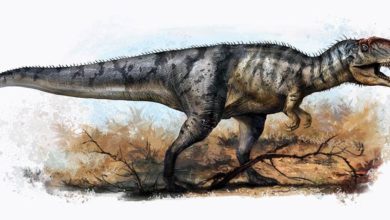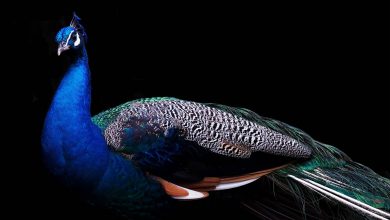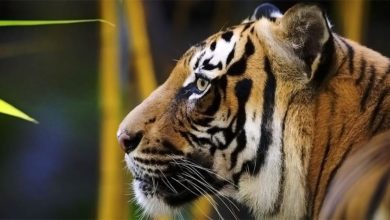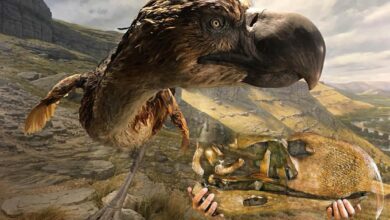Cheetah (Acinonyx jubatus) – the fastest land animal in the world
The cheetah is the fastest land animal. It can be found in Africa and Asia. Previously, it lived almost the entire Africa and the Arabian Peninsula, now the range of occurrence is very limited. Several hundred individuals are found inter alia in southern Kazakhstan and Afghanistan. It lives in plain areas, such as steppes and savannahs. The cheetah can see and hear very well. It usually lives alone.
The cheetah is a species of a predatory mammal from the family Felidae – the family of cats. However, unlike other big cats, the cheetah is not a Panther.
Is the cheetah the fastest animal in the world?
You can find the answer to this question in the list – The fastest animals in the world – TOP10, where we have presented a table with the speed of almost 100 fastest animals.
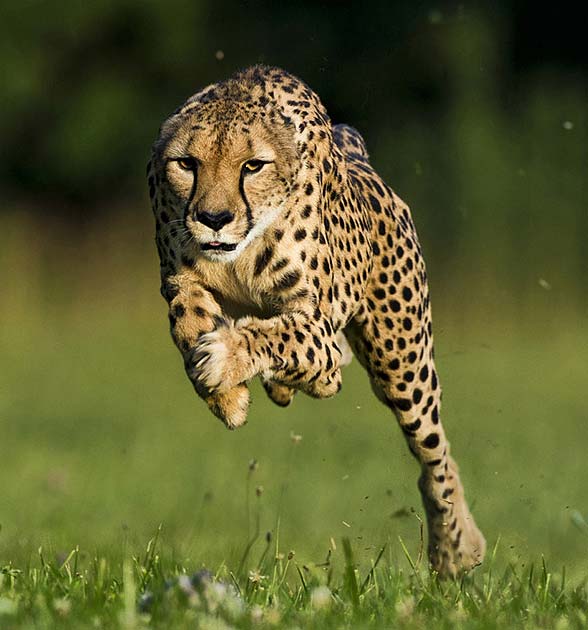
Classification
- Class: Mammalia
- Order: Carnivora
- Family: Felidae
- Genus: Acinonyx
- Species: cheetah
Subspecies
There are six subspecies of the cheetah, however, their taxonomic status has not been fully determined.
- Asiatic cheetah (Acinonyx jubatus venaticus) – found in Asia (Afghanistan, India, Iran, Israel, Jordan, Oman, Pakistan, Saudi Arabia, Syria, Russia).
- Eastern Africa cheetah (Acinonyx jubatus velox) – found in Eastern Africa.
- Northwest African cheetah (Acinonyx jubatus hecki) – found in Northern Africa (Algeria, Djibouti, Egypt, Mali, Mauretania, Morocco, Niger, Tunisia).
- South African cheetah (Acinonyx jubatus jubatus) – found in Southern Africa (Angola, Botswana, Congo, Mozambique, Namibia, Malawi, South Africa, Tanzania, Zambia, Zimbabwe).
- Sudan cheetah (Acinonyx jubatus soemmerringi) – found in Central Africa (Chad, Ethiopia, Cameroon, Nigeria, Niger, Central African Republic, Sudan).
- Tanzanian cheetah (Acinonyx jubatus fearsoni/raineyii) – found in Eastern Africa (Kenia, Somalia, Tanzania, Uganda).
The subspecies: the king cheetah (Acinonyx rex) and the wooly cheetah (Acinonyx jubatus guttatus) are not officially recognized, because of their recessive genes. It is a case similar to white tigers.
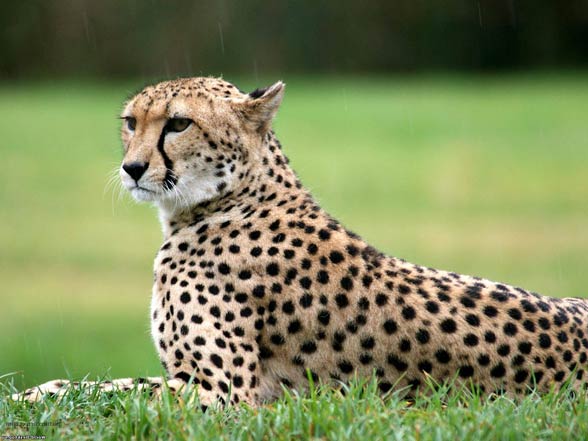
A cat but not a panther
The cheetah, although it belongs to the cat family Felidae, contrary to its larger cousins, does not belong to the genus Panthera, but Acinonyx.
The name Acinonyx (the cheetah is the only species of this genus) comes from a Greek word meaning “a thorn” or “a claw”. It is associated with the cheetah’s paws, and claws that are weakly retractable. The cheetah’s claws resemble spikes in sprint shoes, because they have a similar function – they provide a grip to the surface during a fast run.
Hunting
Contrary to the other cats, the cheetah hunts mostly at daytime. It chooses its prey and stalks it. After a short chase, the cheetah catches and kills it. It is very rare that cheetahs attack people. These cats hunt mostly antelopes and small mammals… and birds.

Speed
When chasing its prey, the cheetah can reach the speed of 120 km/h (75 mph), but only at a short distance. And without any effort, it can reach the speed of 75 km/h (47 mph). The cheetah is very slender, it has a delicate body and low weight, which allow the cheetah instant acceleration.
An experiment conducted by researchers showed that a rabbit that had been 5 meters (16 ft) far from its den couldn’t escape a cheetah that had been 40 (130 ft) meters far from the rabbit.
Secret of the cheetah’s speed
Studies have shown that there are several factors deciding about the cheetah’s great speed:
Long leaps
Incredibly long leaps (to 7 meters) made by a cheetah when it’s running make the animal spend half of the time in the air while running.
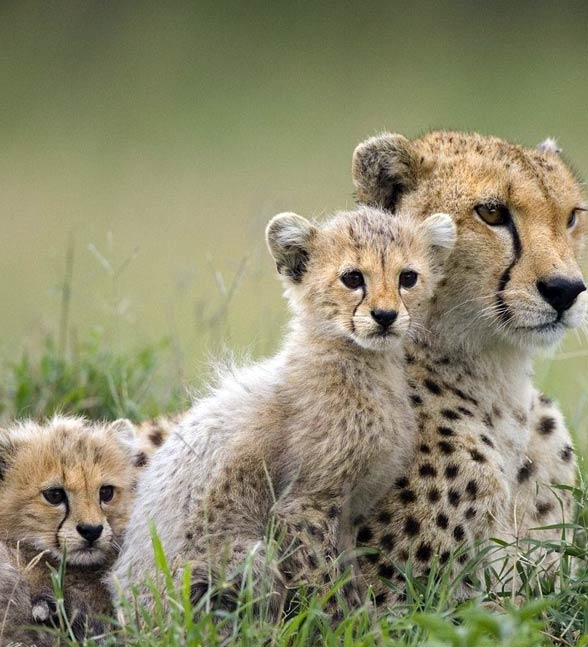
Claws as “spikes”
The cheetah is the only cat whose claws are not retractable. During a run, they play a role of sprint spikes which provide the cheetah with great grip.
Muscle fibers
The cheetah has varied muscle fibers in the forelegs and hinder legs.
In the forelegs, type I muscle fibers are predominant
These are slow twitching fibers which have plenty of mitochondria and high concentration of myoglobin (that’s why they’re called red). They are characterized by high endurance to fatigue.

In the hinder legs, type II muscle fibers are predominant
These are fast twitching fibers (white) – however, they are less enduring (that’s why the cheetah gets easily tired after a short sprint).
“Rear-wheel drive”
Everyone who has ever watched the motoring TV series Top Gear knows that a drive should be only four-wheel, and if it has to be a two-wheel drive, let it be rear-wheel (because there is no bigger fun than driving with a rear-wheel drive). Apparently, nature has thought the same (or it’s us who have mimicked nature :)) and equipped the cheetah with a “four-leg drive”, but with the predominance of the hinder legs. The cheetah’s hinder legs are used as a driver (quite similarly to cars with a rear-wheel drive).
Cheetah vs. human
- Cheetah – 120 km/h (75 mph)
- Human – 45 km/h (28 mph)
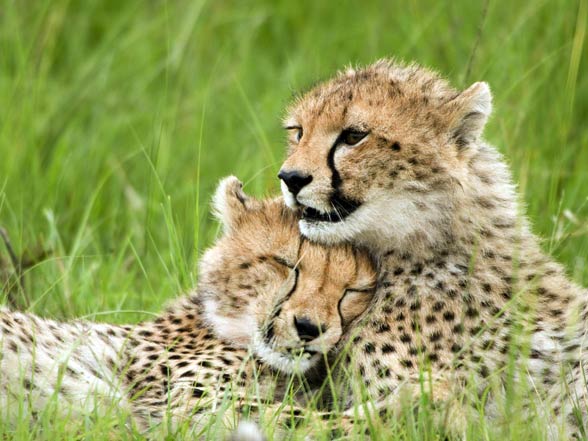
The fastest on land, but not in the world
Although the cheetah is the fastest animal on land, it isn’t the fastest one in the world, because in this category it is outrivaled by a few other animals. You can learn more in the article: The fastest animals in the world TOP 100.
Threats
Unfortunately, cheetahs are on the verge of extinction. Adult individuals are killed by poachers, and the young often become the prey of lions, hyenas or leopards. It happens when a female has to leave her cubs for a longer time in order to hunt.
In 1900, there were about 100 thousand cheetahs. Nowadays, their population has dramatically decreased. It is estimated that there are 9-12 thousand of these animals in the wild.
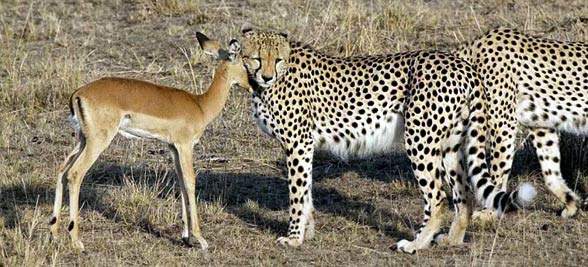
Detailed information / size
Cheetah (Acinonyx jubatus)
- Body length without the tail: 110 – 150 cm (3ft 7in – 4ft 11in)
- Tail length: 60 – 84 cm (1ft 12in – 2ft 9in)
- Height at shoulders: 66 – 94 cm (2ft 2in – 3ft 1in), usually about 90 cm (2ft 11in)
- Weight: 21 – 76 kg (46 – 168 lb)
- males 42 – 65 kg (92 – 143 lb) on average
- females 30 – 45 kg (66 – 99 lb) on average
Males are slightly bigger than females, however, they are difficult to differentiate visually.
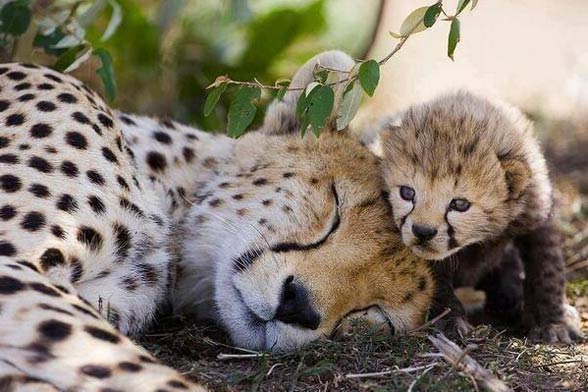
Cheetah – interesting facts
- The cheetah can sprint at the top speed of 120 km/h (75 mph).
- The cheetah can accelerate from 0 to 100 km/h in about 3 seconds.
- A cheetah ran a recorded distance of 100 m (328 ft) in 5.95 seconds. To compare, Usain Bolt’s world record is 100 m (328 ft) in 9.58s.
- Cheetahs sprint with maximum speed at distances not longer than 500 meters (1640 ft).
- The cheetah usually hunts at the speed of 48-56 km/h (30 – 35 mph) and it rarely runs at maximum speed.
- The cheetah’s claws are not retractable which is an exception among cats.
- These cats don’t climb trees.
- Cheetahs suffer from many diseases. It is because of small gene diversity within the species.
- The cheetah has a very long tail in relation to the body length, which helps it keep balance while sprinting.
- There are cheetahs (the king cheetah) that have big, black markings on their fur instead of characteristic tiny spots.
- Cheetahs can growl, hiss, and even… tweet.
- Cheetahs start to hunt at the age of 7 months.
- The serval, often called the smaller cheetah, reaches similar speeds as its “bigger” cousin.

Recommended
- African Lion
- American lion
- Barbary lion
- Bengal tiger
- Big cats
- Black panther
- Canadian lynx
- Clouded leopard
- European cave lion
- Indochinese tiger
- Jaguar
- Leopard
- Liger
- Lion vs tiger
- Lions
- Malayan tiger
- Ocelot
- Pallas’s cat
- Sand cat
- Siberian tiger
- Smilodon – Saber-toothed tiger
- Snow leopard
- Sumatran tiger
- Tigers
- White lions
- White tigers








